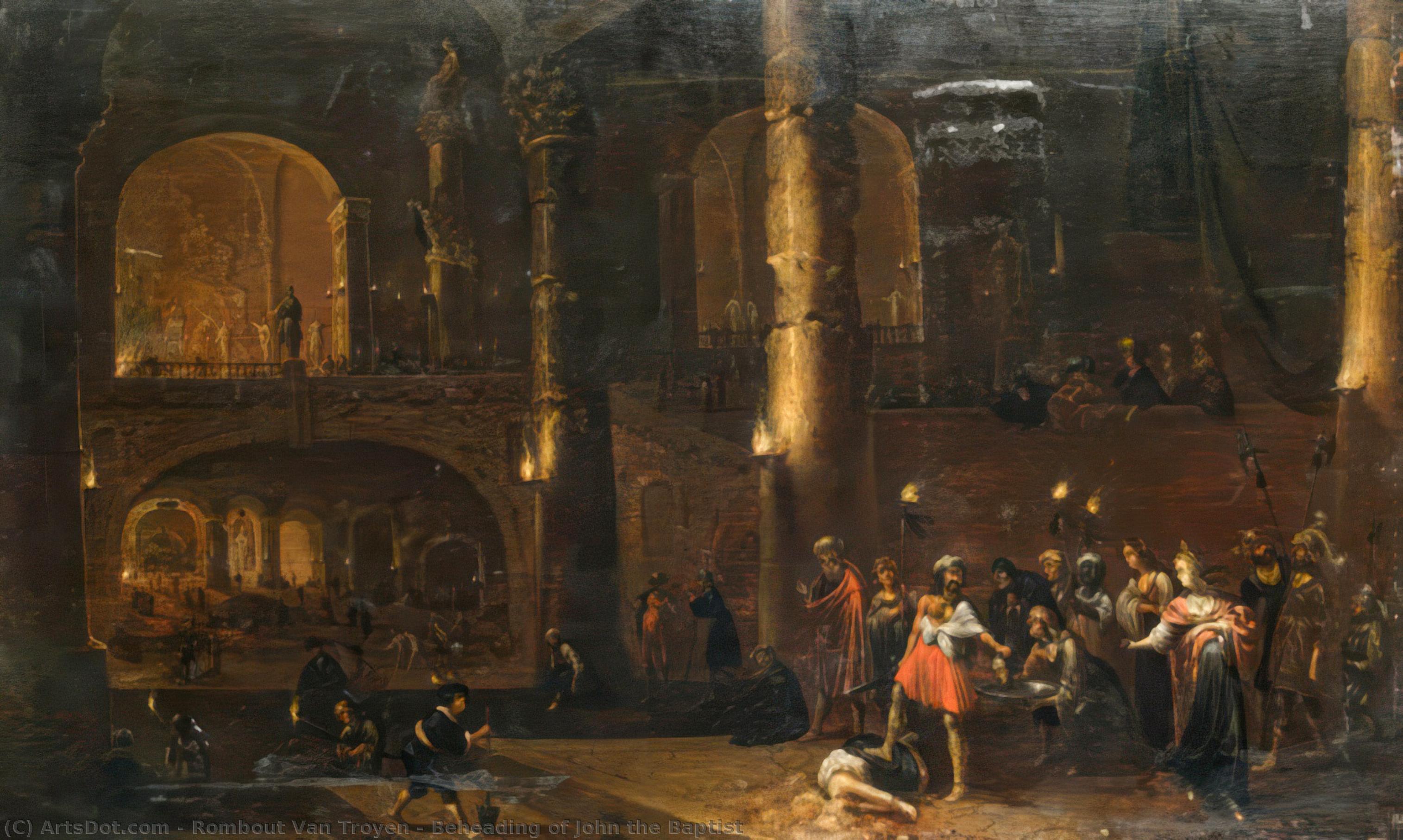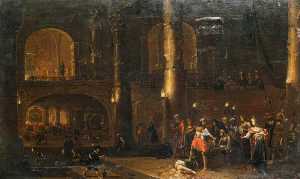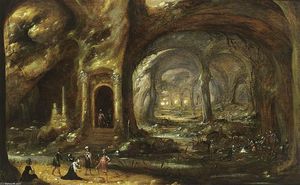Artist: Rombout Van Troyen
Size: 36 x 58 cm
Museum: The Hermitage (St. Petersburg, Russia)
Technique: Oil On Panel
Although often included among the ranks of the followers of Caravaggio in Rome, a grouping which the nocturnal effects of the Lamentation make plausible, Turchi in fact exercised considerable independence in his choice of sources and influences. Painted in 1617, only a few years after he left his native Verona and settled in Rome, the work reveals a surprisingly strong classicising tendency, despite the use of artificial illumination and dramatic contrasts of light and shade. Part of the Caravaggesque quality here, however, is a product of two very specific elements, the use of slate as a support and the artificial illumination. Since the natural colour of the slate normally serves to produce extreme contrasts of light and shade, Turchi may have included an artificial light source to take advantage of those tendencies inherent in the support. If we put aside the strong use of an internal light source, which could have been inspired by any number of Roman or even northern Italian sources, there is no other apparent influence from such Caravaggesque painters as Gerrit van Honthorst, who specialised in nocturnal effects. Nevertheless, Turchi can hardly have failed to notice the attention the young Utrecht painter was attracting in Rome with his brilliant nocturnal effects at this very moment.Furthermore, as a northern Italian, he was certainly familiar with the various nocturnal scenes popularised by the Bassano family. When it came to the rendering of the figures, however, it is to Annibale Carracci's famous c. 1600 Pietà (Museo di Capodimonte, Naples) that Turchi turned. In 1617 this famous painting, made for Cardinal Odoardo Farnese, was still in the Palazzo Farnese in Rome. From this important and unusually lovely canvas by Annibale, Turchi borrowed the idealised pose and classical rendering of the body of his dead Christ. This strongly classicising quality probably accounts for the later attribution of the picture to Annibale himself in the 1700 inventory of the Borghese collection.
Artist |
|
|---|---|
Download |
|
Permissions |
Free for non commercial use. See below. |
Rombout Van Troyen – Most viewed artworks
|
This image (or other media file) is in the public domain because its copyright has expired. However - you may not use this image for commercial purposes and you may not alter the image or remove the watermark. This applies to the United States, Canada, the European Union and those countries with a copyright term of life of the author plus 70 years.
|





 Note that a few countries have copyright terms longer than 70 years: Mexico has 100 years, Colombia has 80 years, and Guatemala and Samoa have 75 years. This image may
not be in the public domain in these countries, which moreover do not implement the
Note that a few countries have copyright terms longer than 70 years: Mexico has 100 years, Colombia has 80 years, and Guatemala and Samoa have 75 years. This image may
not be in the public domain in these countries, which moreover do not implement the